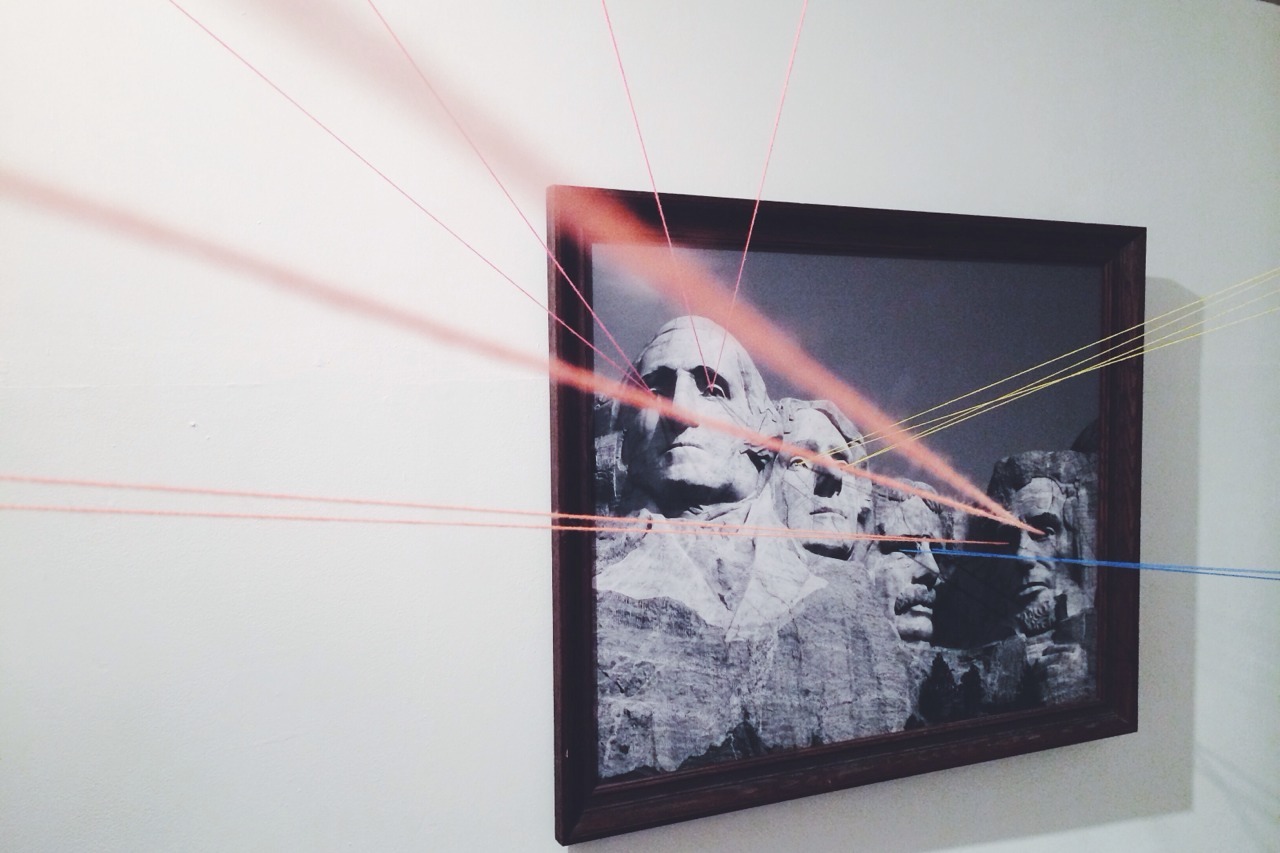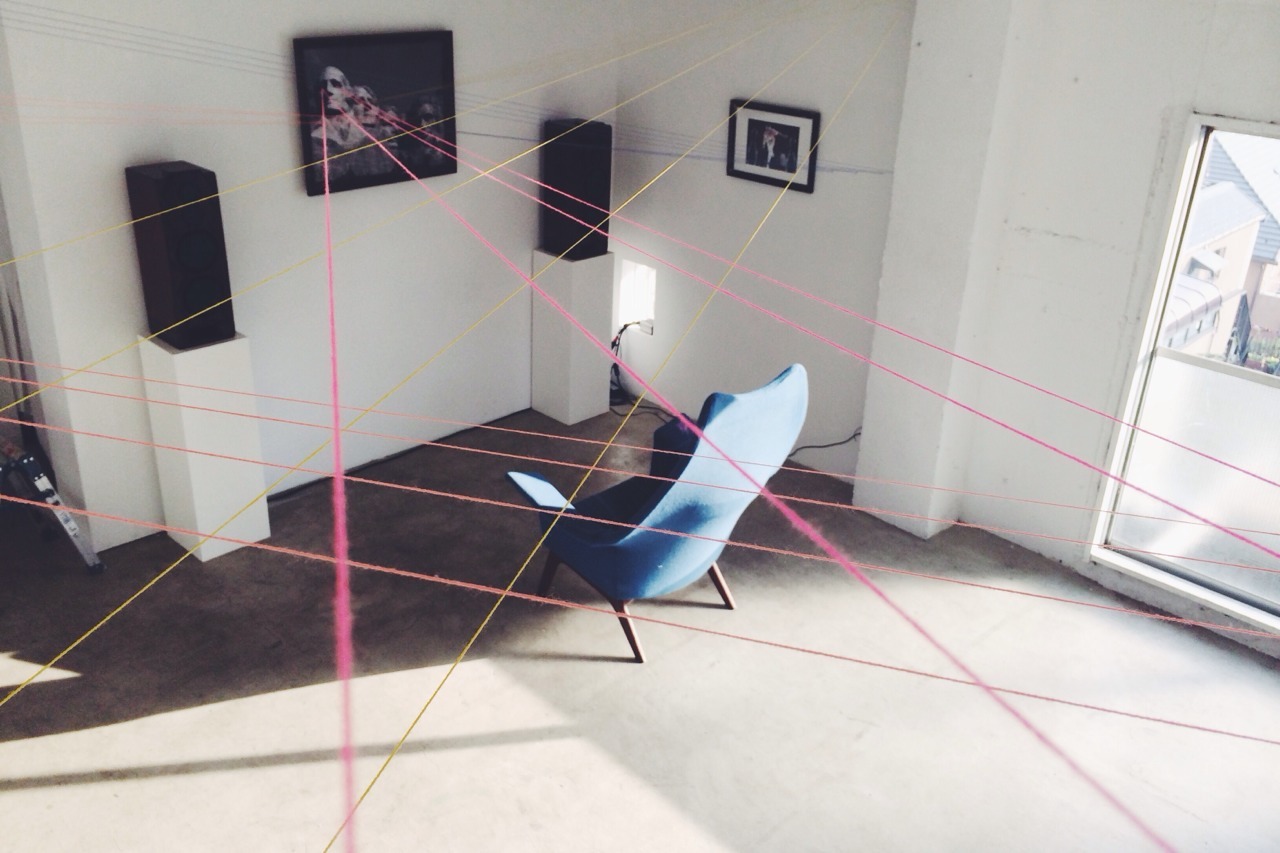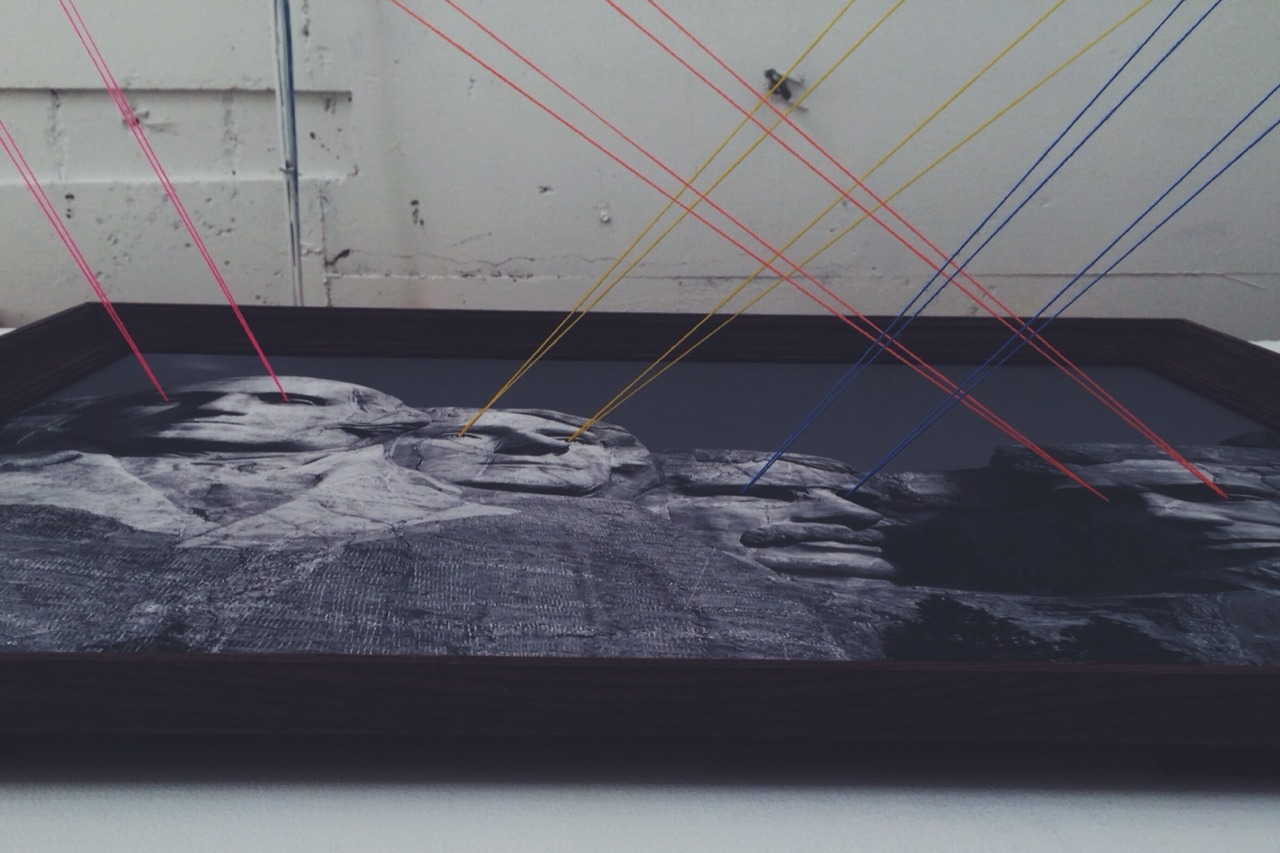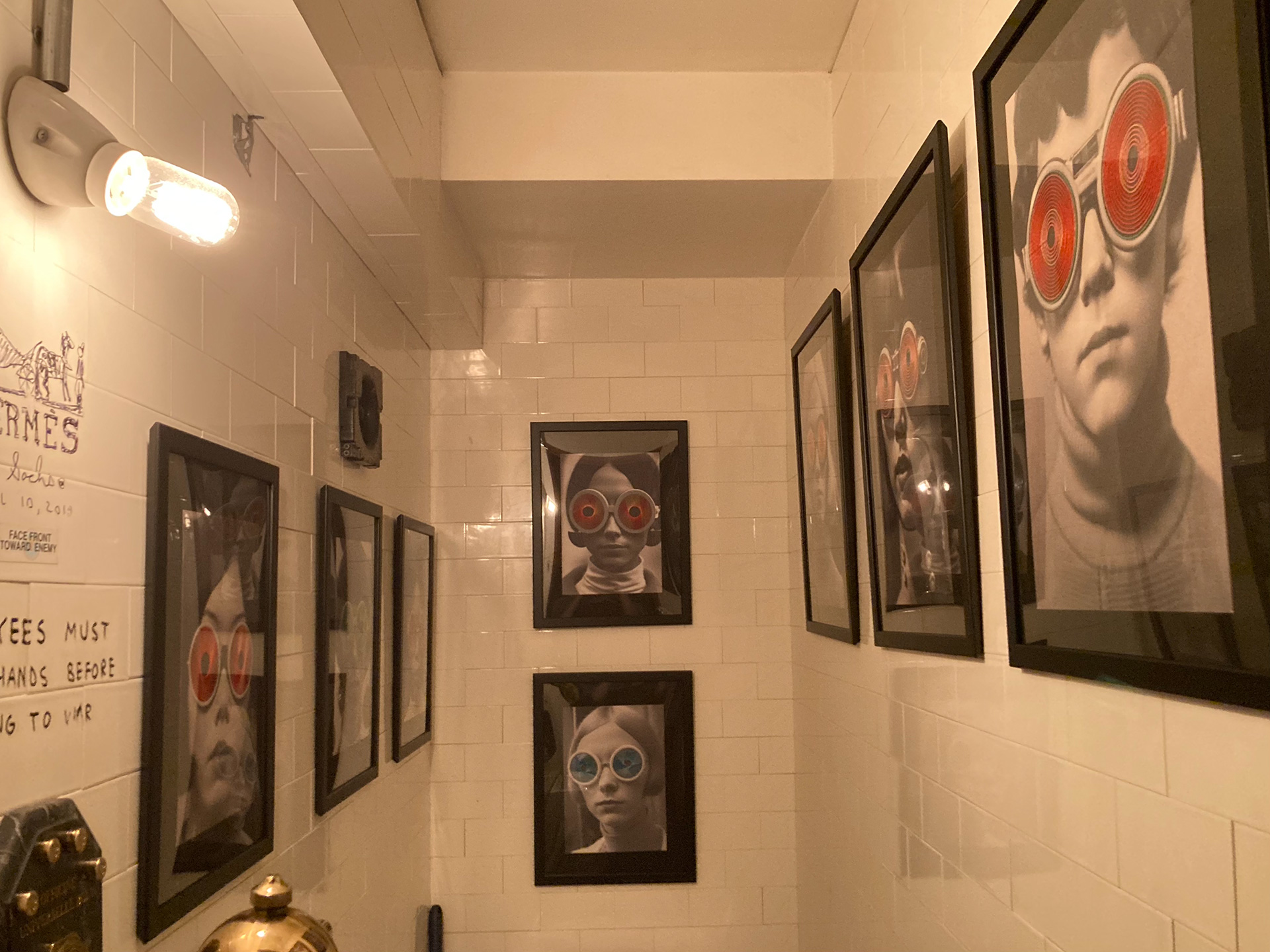Mana Morimoto
Interview (2023)
When did you start making art?Around 10 years ago, I think. I was in America before that, attending a music business community college inspired by the simple motive “I love music”. But, I soon discovered that I’m the complete opposite of a business person. After graduating I had no choice but to return to my hometown in Sapporo, where I experienced reverse culture shock, or I guess just found every day completely boring. I began to seriously feel that I was going to rot away if I didn’t create something with my hands, and so I started doing art. Up until that point I was just a girl who spoke English and liked music but at the end of the day I wasn’t creating anything of my own, and was driven by the desire to output something myself.
Have you had any formal education or experience in art-related fields?Not at all. Since I was little, I’ve enjoyed working with beads and sewing, but it was just something I was good at, not anything I never thought of pursuing it as a career. I hadn’t embroidered since I was a kid either. I had no background in art whatsoever, and I just started doing it on a whim because I wanted to try it out.
What did you start out making?It started with a collaboration with one of my friends in America who sent me an image of her drawings. We talked about adding something to that image and I decided to try embroidering on the printed-out paper. Later on, I started printing out facebook profile photos of my friends and adding embroidery to them, then sending to them. I posted some of these projects on Tumblr, and that’s when I began to gain attention from people overseas.

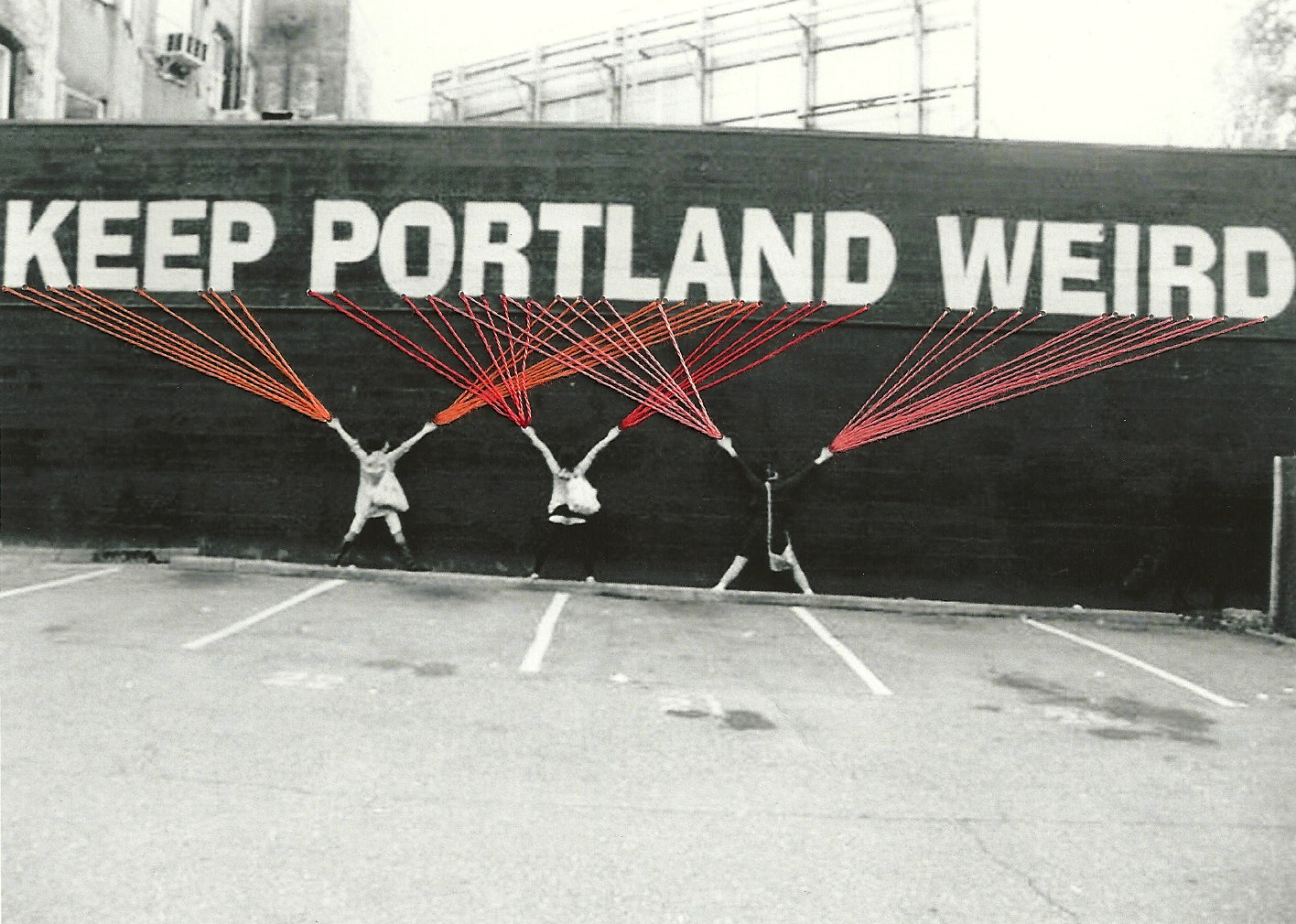
And then you moved to Tokyo?Yes, but I never had the desire to become an artist. I had decided to move to Tokyo to work for a record label, but the job offer fell through due to their belief that it was too physically demanding for a woman. Nonetheless, I decided to move to Tokyo anyway and figure out work once I arrived. While I was helping out at an Internet radio station, I met the people from MIDORI.so. After showing them my work, they offered me various opportunities, such as exhibiting my pieces. From there, I started to focus more on creating art.
Embroidering on paper seems like it would be difficult since the holes remain once the needle passes through, unlike with cloth.Right. That’s why I make all the holes first before running the thread through them. I put a piece of paper with just an outline on it over the actual paper of the artwork and then poke all the holes. Then I remove the paper and begin embroidering. It’s a pretty laborious process, especially for works with curved lines as it can take hours to just make the holes even if I’m completely focused. In the beginning I was pushing sewing needles through thick paper, but I’ve gradually arrived at my current method while searching for ways to work that I found easier.
Has the change in your production methods affected the quality of your work?I think it’s given my art a cleaner finish. At first I was only embroidering eye beams, like stringing lots of thread from a single hole, so the way the thread overlapped would look cluttered if things weren’t arranged neatly.

You also create three-dimensional artworks and installations. Do you approach them with the same mindset as embroidery?When I was preparing for my first solo exhibition, I had the idea of “trying to extend embroidery into 3D”. I printed a photo on a large panel and made holes in them, and then I tried to stretch the yarn out from those holes. That was the beginning. During the exhibition, I kept extending the yarn longer and longer, until there were so many strands that it became difficult for people to walk around
Like laser beams.Exactly. I love lasers. While I didn’t really accomplish much during my time in America, I did go to tons of concerts, so I think that may have something to do with it.
Just like your embroidery, you also use thread in your 3D pieces and installations. Is there something you think can only be expressed in thread?Thread is limp in its normal state, but it becomes a straight line when pulled tight, can become clothing or objects when woven, which also makes it stronger. I find these transformations interesting. Thread also proved unexpectedly easy to work with when I tried to convert the visions I made in embroidery into three-dimensions. And while I use ready-made embroidery thread, I still find the colors very pretty. You can also layer thread. When you put, say, blue thread over yellow thread, it starts to look a little greenish, and you also get shading almost like gradation or even different tones depending on the angle. That’s also part of what makes it interesting, I suppose.
Are there differences between embroidering straight lines and curves?Curves were a challenge for me. I’d only ever done straight lines up to that point, which had left me restrained, I guess, like there were limits to what I could create that way. So when I decided that the next thing I would attempt was making curves in the thread, I recalled the kinkoma embroidery techniques I had seen at kimono exhibitions. Kinkoma embroidery is a technique for adding threads of gold leaf to kimono or obi. The gold thread is stiff and can’t be embroidered normally, so thicker threads that follow a design are held in place with finer threads. I thought that I might be able to use this technique to embroider curved lines, so I tried it out on paper. The only problem was that it takes a ton of time. Straight embroidery is really clear even when reviewed from the reverse side, but things get a little more complicated when you start doing curves.



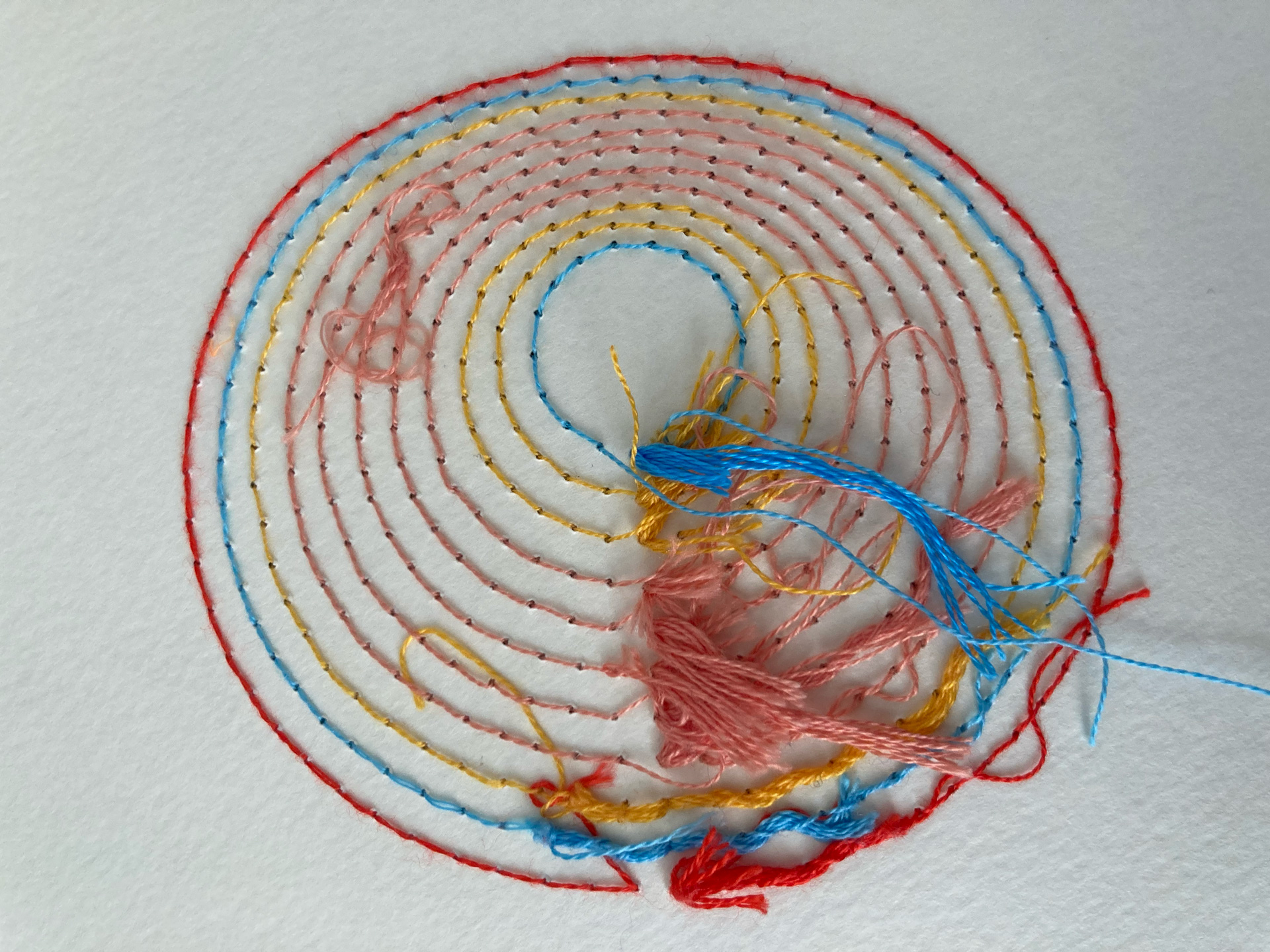
But the reverse side is cool and pretty in its own way, too.That’s right. That’s why I want to try displaying my work in a way that shows the back side, like hanging pieces in frames that are clear on both sides or using mirrors.
And what you made with curved embroidery is your new The Hypnochromatic Series?This is all still in the works, but I actually want to try making op art like embroidery or something with more organic shapes.
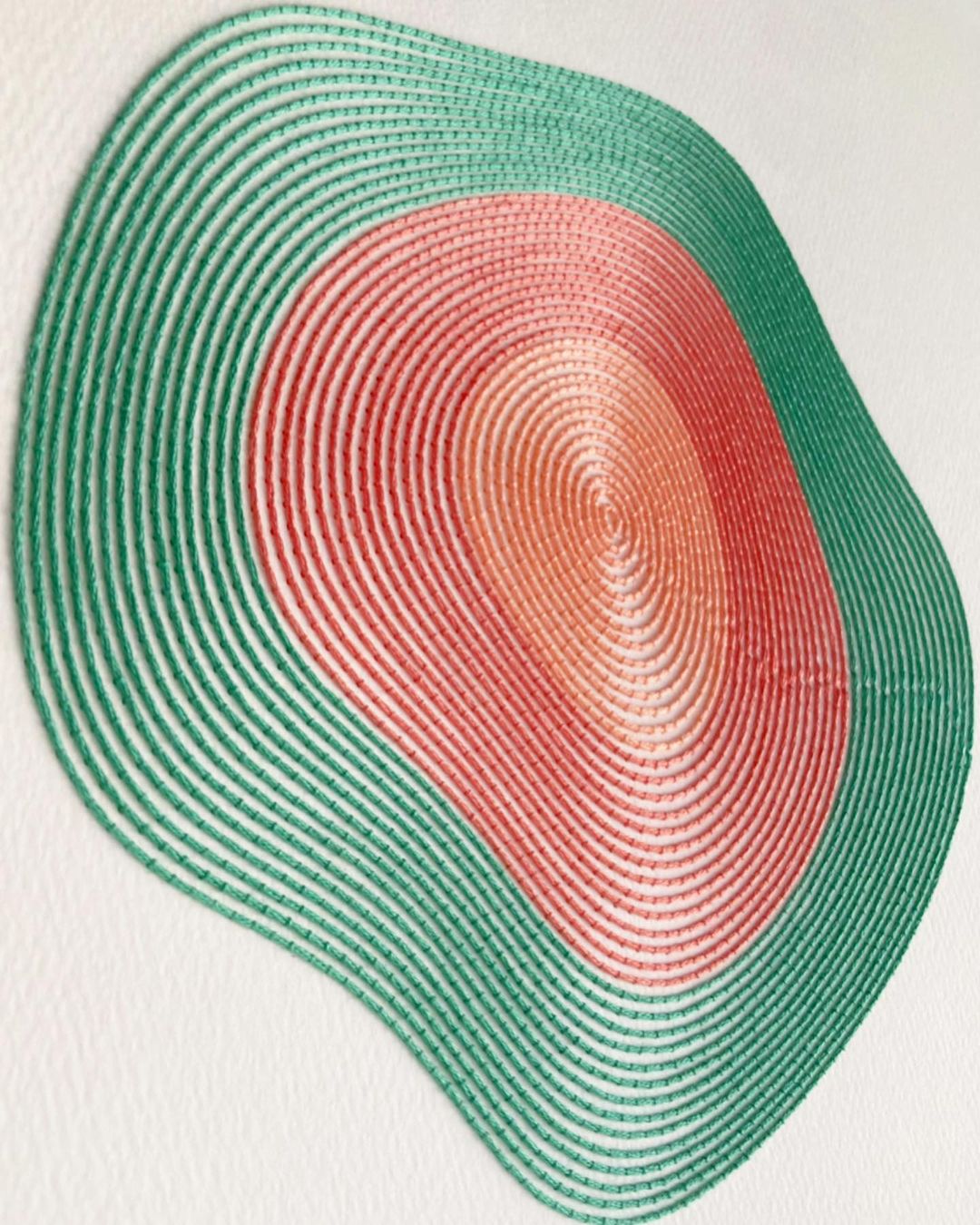

Unfortunately, when I actually gave it a try, it turned out to be really difficult and took much more time than I’d imagined. That would’ve been okay if this was a solo show where I had a long window to prepare, but I knew I’d never get everything done in time for this show. I’d been messing around with making AI-generated images, so I got the idea to do embroidery on AI generated images and then was like “If I’m going to use curves, glasses are the way to go!” And thus we have this series.
So what are those round glasses exactly?They’re hypno glasses, like for mind control. You see them in kid’s movies like The Incredibles or Minions where they make people see strange imagery and get brainwashed when they’re worn. They’re one of those pieces of imaginary technology from the old days, I guess. I liked the way hypnoglasses looked, so I made them my motif. In my previous works, I had always depicted beams shooting out of the eyes, which made it important to capture the subject’s gaze, and prevented me from using photos of people wearing sunglasses or eyewear. I think this series is a reaction to that limitation, and I just like the way it makes me feel when there is something special in the eyes, whether it’s beams or glasses.
Had you been using an AI image generation service?No. Those services started to pop up around last year or so, but at that point I just thought of them as cool or interesting but not anything I’d use in my art. But all of my work so far had been based on photos, which was itself kind of a limitation. I could take my own photos or direct them myself, that would eliminate the element of chance and make it less interesting to work with. So I had found myself stuck when it came to new ideas for embroidery. It was right around then that AI image generators made some huge advancements to where I finally started to think I could use them in my artwork.
Actually, there was a woman overseas who completely copied my work a few years back. I’ve been doing embroidery on black-and-white photos of rappers and celebrities going way back, and she’d copied these pieces to a level where it just couldn’t be coincidence. And to make things worse, her work had generated a lot of buzz on social media. This came as a huge shock to me, and since it happened right around when my child was born and I didn’t have any time or extra energy to make art, I was on the verge of giving up on embroidery. But by realizing that I can use AI generated photos, I felt like a whole new path had opened up for me.
How exactly do you have the AI make the images?I use a service called Midjourney where I provide text prompts
Did you find it easy to use the AI image generators?All of the prompts and generated images of everyone who uses this service are made available to the public, so in the beginning I’d find some imagery that I like the feel of and then analyze what kind of keywords were use to make it, just kind of mimicking what I saw. The only problem is that when you look at public prompts, you’re also seeing all the fantasies in people’s heads, which also feels kind of weird. Like people’s depictions of their perfect women and so on. There are probably people out there using AI-generated images as a base for designing things like logos and websites and still claiming it as their original design and make money.
That does seem like it will become more common in the future.While I do wonder about the implications of this, there’s no stopping the advancement of AI. Besides, it’s not all negative; in fact, there are cases where AI can be incredibly helpful. Even artists who express opposition towards AI often create work that caters to social media trends. Given that social media relies on algorithms, anyone using a smartphone and participating in social media is already heavily immersed in AI.
I have AI make photos for me too, but I’m also adding something that can only be done by human hands, so I guess to create some sort of value that way. I think AI is seriously amazing, but at the same time there’s a part of me that’s kind of like “We can’t let AI take everyone’s jobs!” so I guess I’m kind of having my cake and eating it too by working with AI while also being sort of against it
True, completely ignoring AI just isn’t possible any more.That’s for sure and since there are definitely interesting possibilities with AI going forward, I think what’s important is how we engage with it. Speaking of, ChatGPT just recently got an upgrade where you can now have bots look at images. Also, the truth is that the title “The Hypnochromatic Series” was an idea proposed by ChatGPT. I even have the AI make mini stories for each piece that I then use as captions. There are more and more Instagram accounts popping up that only post images created with Midjourney, all kinds of fun, surreal stuff like people wearing clothes with crazy designs or worlds where animals are gigantic. But since all of that only exists on-screen from start to finish, I wanted to do something a little different, so I have AI generate the photos which I print out and add embroidery on, and then show the art to the AI again to have it comes up with captions before posting on Instagram
Do you think this series will serve as a jumping point for you creating more art?There are definitely some things I want to try, such as the series with more organic shapes that I mentioned earlier, or pieces that don’t rely on photos. I’ve done some art without photos in the past, but I’d like to spend more time on those types of pieces. I have a toddler now and very little time, but I still want to make it work somehow. So, right now, I’m in the process of trying to find a good balance that works for me.
Translation: Luke Baker
